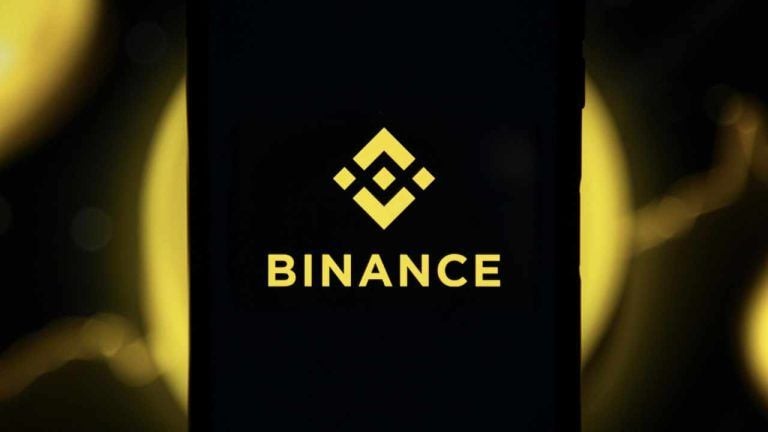On October 20, The Bank of Japan’s (BOJ) deputy governor, Masayoshi Amamiya, repeated his negative stance towards central bank-issued digital currencies (CBDC), claiming that such digital currencies are unlikely to improve the existing monetary systems.
The concept of CBDC, or national cryptocurrencies, has attracted many governments across the world. Some of them have already rolled out their virtual currencies, some keep researching their economical impact, while others — like Japan — have decided to dismiss the idea altogether. Here’s what the concept entails, and why major governments choose to implement or deny it.
What’s a CBDC?
CBDCs, or national digital currencies, are virtual currencies that are issued and controlled by a federal regulator. Hence, they are fully regulated by the state. CBDCs are not decentralized, like most cryptocurrencies — instead, they represent fiat money, only in digital form.
Consequently, a central bank that issues its CBDC becomes, not only its regulator, but their clients’ account holder as well. Each CBDC unit acts as a secure digital equivalent to a paper bill, and is normally powered by distributed ledger technology (DLT).
CBDCs could be seen as central banks’ response to the growing popularity of cryptocurrencies, which bypass regulators’ purview by design. CBDCs, in turn, aim to take the best from cryptocurrencies — namely the convenience and security, and combine those features with the time-tested features of the conventional banking system, where money circulation is regulated, and reserve-backed.
Switzerland: Blockchain is as useful as CDs, so why issue a CBDC?
Despite its status of the most crypto and blockchain-friendly country in Europe, Switzerland has expressed its doubts regarding the usefulness of CBDCs.
In June, board director of the Swiss National Bank (SNB), Thomas Moser, stated that cryptocurrencies and blockchain are not innovative enough to consider issuing a state-backed digital currency. Speaking at the Crypto Valley blockchain conference in Zug — also known as the “Crypto Valley” — Moser compared blockchain in its present condition with the “useless innovation” of Compact Discs (CDs), arguing that cryptocurrencies merely imitate already existing products — such as “digital shares, bonds, vouchers”:
“Something similar has to happen with Bitcoin. People will only switch to something new if it works better or is cheaper.”
The following day, Moser told Business Insider that although there was initial interest among central banks in issuing CBDCs, “enthusiasm has slowed again because of the implications it would have for financial stability.”
Previously, Switzerland showed its interest in issuing its CBDC, potentially titled “e-franc”: in May, the Federal Council of the Government of Switzerland requested a report on the risks and opportunities of introducing a government-backed digital currency. The idea to develop a national cryptocurrency was proposed in February by Romeo Lacher, chairman of the Swiss stock exchange SIX, when he argued that “an e-franc under the control of the central bank would create a lot of synergies — so it would be good for the economy.”
China: CBDC is ‘technologically inevitable’
The People’s Bank of China (PBoC) has been researching the concept of CBDC for some time now — a specific research institute named Digital Currency Research Lab was established for this very purpose last year.
Recently, in September, PBoC extended the activities of the Digital Currency Research Lab beyond the country’s capital, opening a new research center in Nanjing — which could be a sign that a Chinese national digital currency is in the works. Moreover, in October, PBoC opened four positions for crypto-related professionals to develop a secure data platform and a chip processor that would allow crypto transactions.
Previously, in March, governor of the PBoC, Zhou Xiaochuan, expressed the agency’s cautious position regarding the matter:
“If [blockchain technologies] spread too rapidly, it may have a big negative impact on consumers. It could also have some unpredictable effects on financial stability and monetary policy transmission.”
Zhou also declared that digital currency will ultimately diminish cash circulation, while stressing that the PBoC “must prevent substantial and irreparable damages” to the domestic economy. Nevertheless, according to China Daily, he also claimed that the development of digital currency is “technologically inevitable.”
Hong Kong: Studied CBDCs, decided it is ‘not superior to existing infrastructures’
Hong Kong has a much clearer position regarding CBDCs compared to mainland China: in May, its government issued a press release stating that Hong Kong will not issue a CBDC in the near future, citing the existence of an already efficient payment infrastructure. The statement was signed by Joseph Chan, the Acting Secretary for Financial Services and the Treasury in the Legislative Council.
Chan explained that the Committee on Payments and Market Infrastructures (CPMI) — an agency comprised of members from the People’s Bank of China (PBoC) and the Hong Kong Monetary Authority (HKMA) — and the Markets Committee (MC) of the Bank for International Settlements had been jointly studying the potential effects of CBDC. Conclusively, their report showed that “currently proposed implementations of CBDC for wholesale payments look broadly similar to, and not clearly superior to, existing infrastructures.”
The paper also argued that any benefits of CBDC may be limited due to the existence of efficient private retail payment products, essentially making CBDC “a subject which requires further study and more proof-of-concept work to ascertain its feasibility for payment applications.”
Venezuela: Has a national cryptocurrency, although a really questionable one
In February 2018, the government of Venezuela launched a national cryptocurrency called the Petro, or Petromoneda. It was first announced in December 2017 via TV, when Venezuelan president Nicolas Maduro declared that his government was planning to issue a cryptocurrency backed by the country’s oil, gold, and mineral reserves. In January, he elaborated, stating that 100 million petros backed by an equivalent number of barrels of oil were about to be issued. According to Maduro, a number of fiat currencies, including the Russian ruble, the Chinese yuan, Turkish lira, and the euro would be freely convertible with Petro.
Petro is not a CBDC per se, as it is not issued by the local central bank and is different from the extant fiat currency, the Sovereign Bolivar (although it is legal tender). Core developer of Ethereum, Joey Zhou, recently pointed out that Petro has apparently plagiarized parts of its white paper from the GitHub repository of Dash.
The Venezuelan digital currency was designed to avoid the U.S. sanctions that negatively impacted the local economy — as Maduro put it, to fight the financial “blockade” erected by the U.S. President Donald Trump’s administration. Consequently, in March, Trump issued an order to effectively restrict American investors from participating in the Initial Coin Offering (ICO) of the Petro, which started on February 20. Nicolas Maduro has claimed that a total of $5 billion dollars was raised during the presale period — which would make it one of the largest ICOs to date, putting the $2 billion Telegram ICO and $1 billion token sale of EOS behind it. The public sale of Petro is set to begin on November 5.
Petro reportedly has ties with Russia, as, according to anonymous sources cited in a Time article, the cryptocurrency has been receiving Russian support since 2017, particularly due to the appeal of bypassing western sanctions also imposed on the country. As the Russian state bank source allegedly told the publication, “People close to Putin, they told him this is how to avoid the sanctions.” Those claims were later denied by Konstantin Vyshkovsky, the head of the Russian Finance Ministry’s state debt department.
The Venezuelan government seems to actively force Petro upon local citizens ahead of its public launch. For instance, Petro was recently made the only currency that Venezuelans can pay their passport fees in, while also increasing the fees: from October 8, a new passport costs 2 petros, and an extension costs 1 petro. The average monthly minimum wage in Venezuela, as Bloomberg reports, is four times less than the cost of the raised passport fee.
Further, in a recent television broadcast, Maduro declared that “in the coming weeks,” workers would begin receiving bonus payments “based on” Petro, rather than the Sovereign Bolivar.
Japan: CBDCs would work if there was no cash, but we need cash for now
Japan, the country where Bitcoin is recognized as an official means of payment, has publically discarded the concept of CBDC twice now. On October 20, Bank of Japan (BoJ) Deputy Governor, Masayoshi Amamiya, expressed his doubts regarding the effectiveness of CBDC, adding that his agency won’t be issuing its digital currency in the near future.
More specifically, Amamiya responded to a theory suggesting that CBDCs can help governments overcome the “zero lower bound” — a situation in which interest rates fall to zero and they lose tools to stimulate the economy. As per the theory, CBDC would enable central banks to stimulate the economy by charging more interest on deposits from individuals and firms, and thus motivate them to spend more money.
The Deputy Governor questioned that theory, claiming that charging interest on central bank-issued currencies would only work if central banks fully eliminate physical money from the financial system. Otherwise, the public will still continue converting digital currencies into cash in order to avoid paying interest.
The elimination of fiat money in Japan is “not an option for us as a central bank,” since cash is still a popular method of payment in the country, Amamiya explained.
Earlier this year, in April, the BoJ publically dismissed the idea of CBDC for the first time, as Amamiya declared that such currencies can have a negative impact on the existing financial system.
That time, Amamiya noted that CBDCs are “[stimulating] global discussion on to what extent central banks should provide their payment and settlement infrastructures to society,” noting:
“The issuance of central bank digital currencies for general use could be analogous to allowing households and firms to directly have accounts in the central bank. This may have a large impact on the aforementioned two-tiered currency system and private banks’ financial intermediation.”
EU: Not ready for CBDCs
The European Union seems to have taken a wait-and-see approach in terms of CBDC. In September, the European Central Bank (ECB) President, Mario Draghi, announced to the European Parliament that they have “no plans” to issue a digital currency.
The ECB executive elaborated by arguing that “technologies which could potentially be used to issue a central bank digital currency, such as distributed ledgers, have not yet been thoroughly tested and require substantial further development” before the Central Bank would consider using them.
Whilst stressing that “The ECB and the Eurosystem currently have no plans to issue a central bank digital currency,” he also added that his agency was “carefully analyzing the potential consequences of issuing such a currency as a complement to cash.”
Moreover, Draghi used another popular argument against CBDCs, implying that the central bank would have to compete against other banks in the retail sector:
“With regard to the central bank administering individual accounts for households and companies, this would imply that the central bank would enter into competition for retail deposits with the banking sector and lead to potentially substantial operational costs and risks.”
Finally, he added there was “no concrete need” to issue an additional currency within the eurozone at the moment, because demand for cash banknotes “continues to grow” in the EU.
Previously, in September 2017, when Draghi was asked about national cryptocurrencies, he stressed the following: “No member state can introduce its own currency […] The currency of the eurozone is the euro.” After his comment went live, Estonia shut down the development of Estcoin, a national cryptocurrency.
Moreover, last summer Germany declared its negative stance: in July this year, the German Federal Ministry of Finance declared that issuing a CBDC would be too risky to implement, in a response to Green Party MP Gerhard Schick.
“So far there are no convincing reasons for issuing digital central bank money for a wide range of users in Germany and the eurozone,” business newspaper Handelsblatt quoted the Ministry as saying at the time.
The Ministry further argued that the potential benefits of a CBDC –– namely high-speed bank transfers –– could also be achieved in other ways. In short, the agency claimed that CBDCs involve “a number of risks that are not well understood.”
Other fears voiced by the Ministry included a central bank jeopardizing its independence — as it would allegedly get a stronger position in the financial system by issuing a cryptocurrency — and the crisis scenario in which the central bank hits bankruptcy faster and on a larger scale due to lower transaction costs, along with the classic ones: AML compliance and terrorist funding concerns.
Canada: CBDCs can bear interest, improve welfare gains
In November 2017, the Bank of Canada published a report titled “Central Bank Digital Currency: Motivations and Implications,” which was co-authored by its Currency Department employee. Although such a paper does not necessarily represent the official stance the Bank of Canada takes in regard to CBDC, it clearly demonstrates the agency’s interest.
In short, the document argued that, as society moves toward becoming cashless, the central bank’s essential revenue source, seigniorage — i.e., profits made from printing more money — becomes compromised. CBDC, in turn, allows it to maintain seigniorage through creating digital cash.
Moreover, the Bank of Canada report mentioned the lack of transaction fees and financial inclusion as other potential benefits of CBDC but highlighted anonymity as “undesirable for central bank digital currency.” The paper concluded that more research is needed to decide if the Bank of Canada should implement a CBDC.
In July 2018, the Bank of Canada released yet another research. In it, S. Mohammad R. Davoodalhosseini, who works at Funds Management and Banking Department of the central bank, argues that a CBDC has “certain potential benefits, including the possibility that it can bear interest,” while “the welfare gains of introducing CBDC are estimated as up to 0.64% for
Canada.”
Iran: Ban crypto, get a CBDC instead
In April this year, days after banning local banks from all crypto dealings, an Iranian government minister confirmed that an experimental model of a domestic digital currency had been developed. Information and Communications Technology (ICT) Minister, Mohammad Javad Azari-Jahromi, stated:
“The central bank’s [ban] does not mean the prohibition or restriction of the use of the digital currency in domestic development.”
Notably, Azari-Jahromi did not clarify whether the locally-developed digital currency will eventually be made available to the public, nor whether it will be issued by the Post Bank — 51 percent of which is owned by the government — or by another state body.
The news about the experimental Iranian cryptocurrency could be tied to a report suggesting that Iran and Russia could start using cryptocurrencies to avoid Western sanctions. In May, Mohammad Reza Pourebrahimi, the head of the Iranian Parliamentary Commission for Economic Affairs, referred to cryptocurrencies as a promising way for both countries to avoid U.S. dollar transactions, as well as a possible replacement of the SWIFT interbank payment system.
Indeed, recently the U.S. Financial Crimes Enforcement Network (FinCEN) called on cryptocurrency exchanges to monitor Iranian use of crypto to evade sanctions.
Singapore: CBDCs seem efficient, but not in the public context
Singapore has reportedly advanced in experimenting with a CBDC, although it’s not likely to go public.
In June 2017, the Monetary Authority of Singapore (MAS) released a report regarding the so-called “Project Ubin”, a blockchain-powered plan to put a “tokenized form of the Singapore Dollar (SGD) on a [private Ethereum blockchain].” The project is a collaboration between the central bank and blockchain consortium R3, focused on the development of a blockchain pilot to facilitate cross-border payments.
However, in January 2018, Ravi Menon, the managing director of the MAS, criticized the idea of CBDCs, especially in the public context. In an interview with the Financial Times, he argued:
“Why would the central bank want to [issue digital currency to the non-bank public]? If there’s any sense of nervousness about the banks, you will have a bank run; everybody is going to go into the central bank [with their deposits] […] And, if people placed their deposits with central banks, who’s going to extend credit?”
Sweden: Might need a CBDC in the cashless society
In December 2017, Sweden’s Central Bank (Riksbank) published an action plan for the second stage of the “e-Krona” project. An “e-Krona” is defined as “a general electronic means of payment” and as a “complement to cash.” The paper also notes that the Riksbank “has not yet taken a decision on whether to issue an e-Krona and the aim is not for an e-Krona to replace cash.”
Indeed, the main reason for Riksbank to release “e-Krona” is the steeply dropping popularity of cash in the country. The central bank has conducted research — which is no longer available online, for some reason — the first of which was issued back in September 2017.
If implemented, e-Krona could operate under two systems: a value-based one and a registered-based one. The latter version would have digital currency balances stored in accounts on a central database — potentially backboned by blockchain — while a value-based e-Krona would be stored separately on “deposited currency accounts.” The prospect of Riksbanks releasing a CBDC is considerably high, given the pace at which it moves to become the world’s first cashless society.
The UK: We like CBDCs, but they might endanger the commercial banking sector
In May, the Bank of England indicated its stance on CBDC in two staff working papers. Firstly, the central bank issued research analyzing various risks related to CBDCs. The paper notably found that, after initial approximation, there was no reason to believe that introducing a CBDC would have a negative effect on private credit or on total liquidity provision to the economy.
Another working staff paper suggests that CBDC would endanger the current profitable business model used by commercial banks — namely the storage of individuals’ and corporations’ cash holdings. Allowing the “radical idea” that the public could be given the option to store their money at the central bank in the form of central bank digital currencies and transfer their money seamlessly, using digital wallets, the research warns that such a scenario could have critical consequences for the commercial banking sector:
“Banks may be subject to an outflow of retail deposits, in particular in a scenario of financial stress.”
In May, the governor of the Bank of England, Mark Carney, declared that he was open-minded about the prospect of a implementing a CBDC, but stressed that any CBDC adoption would not happen any time soon.
India: Printing cash is expensive — a CBDC seems cheaper
India is one of the latest countries to join the ranks of states actively researching CBDCs, as in August, the Reserve Bank of India’s (RBI) confirmed the creation of an inter-departmental group tasked with analyzing the usefulness of issuing a rupee-backed digital currency.
Apparently, cost considerations became an important motivating factor for studying fiat-tethered CBDCs: the statistics cited by the Economic Times suggest the cost of printing paper notes in India was 6.3 billion rupees (about $89 million) in 2018. Moreover, RBI’s report argued that fiat printing costs motivate some other central banks to go digital as well:
“Globally the rising costs of managing fiat paper/metallic money, have led central banks around the world to explore the option of introducing fiat digital currencies”.
Other factors cited by the Indian central bank reportedly include “rapid changes in the payments industry” and the “rise” of private digital tokens.
EY India’s Mahesh Makhija told the paper that “the idea of a central bank issued digital currency is very promising, though issues around digital counterfeiting will need to be addressed.”




